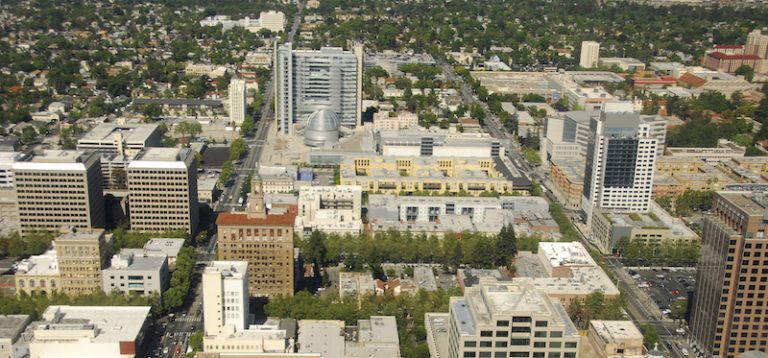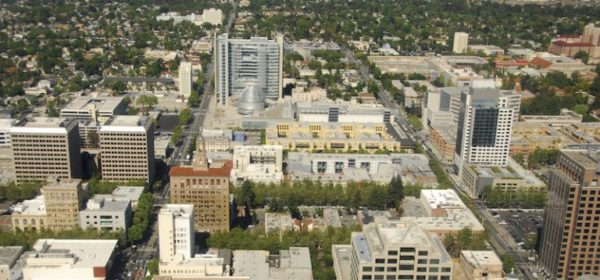
Five Trends that Will Shape Silicon Valley in 2017
While the world waits to see how Silicon Valley will change the way the rest of us live – from driverless cars to making VR an ever more present reality in daily life – Silicon Valley will be reshaping itself from the inside out over the coming year. As a home to the tech elite and generations of Bay Area families, the real estate community is coming together to address questions on density, transportation and affordability. Below, we examine five key factors that will guide the sensible development of Silicon Valley through 2017.
Repurposing the Retail Center
City governments and developers are rethinking underused retail sites, responding to new concepts of urbanism, a shifting retail landscape and a dire need for more housing units in Silicon Valley. The emergence of a variety of large-scale, mixed-use projects coming to fruition as a response represents a potential lifestyle shift for users; rather than self-contained, single-use developments, such as the big box retail store or the suburban-style shopping mall, these projects are positioned as dense, sustainable, and multi-purpose.
A prime example is The Hills at Vallco. Developed by Sand Hill Property Co, The Hills at Vallco will transform the defunct Vallco mall in Cupertino into a vast city center consisting of 625,000 square feet of retail, 2 million square feet of office and 800 residential units. Current plans for the project also includ e an orchard, a vineyard, 3.8 miles of trails, and an ambitious and groundbreaking 30-acre elevated park (the feasibility of which has yet to be determined). The project is still under review, but world-renowned architect Rafael Viñoly has already signed on to design it.
Other standout projects includ e Gateway Village, where Essex Properties has proposed 420 rental units and 86,000 square feet of new retail on the site of a former Kohl’s and Taco Bell that spans over 12.6 acres; City Place Santa Clara, located on the site of a golf course and BMX bike track, where Related Co. has been approved to develop 5.7 million square feet of office, 1.1 million square feet of retail space, 1,360 residential units, and 700 hotel rooms on 239 acres; and the Pruneyard, the site of the existing 250,000 square foot Pruneyard retail center, and the a site where Ellis Partners has committed the addition of 23,000 square feet of additional shop space and a new 5-story 100,000 square foot office building.
A true Cinderella story emerging from this reinvestment in retail has been the Sunnyvale Town Center, a two-level shopping mall that fell into disuse. Efforts to rehabilitate the mall were underway but stalled in 2009. STC Venture LLC, a joint venture of Hunter Storm, Sares Regis and JP Morgan, acquired the partially complete 36-acre mixed-use project in 2016. Phase I, comprising of 198 residential units, is currently under construction. At full buildout, the revitalized town center is approved for additional retail, restaurant, and office space, a multi-screen movie theater with up to 2,950 seats, a total of 292 residential units; a hotel with up to 200 rooms, and a landscaped plaza.
Transit-Oriented Developments (TODs)
Transit-oriented development encourages sustainable alternatives to driving by clustering housing and resources near transit; this approach represents a major change from the car-oriented suburban development model that has defined Silicon Valley for decades. While TODs aim to mitigate the dismal traffic conditions that characterize Bay Area highways, not everyone is on board with this culture shift. Heavy pushback from local community groups and rigid zoning restrictions frequently delay, compromise, or flat-out reject these developments.
Despite this resistance, given the wide gulf between jobs and housing, commuting is a reality for many, particularly as affordability concerns lead workers to live farther away from their jobs. Population growth also plays a role in the need for TODs: The California Department of Finance estimates that Santa Clara County will add nearly 300,000 more residents in the next 15 years. The state of automobile traffic in and around Silicon Valley is unlikely to be lessened until alternative modes of transit and housing connectivity are embraced.
Inspiring several projects, the Milpitas Bart station is expected to open in 2017, and will mark the start of BART service in Santa Clara County, with plans to eventually extend throughout Silicon Valley. Nearby, KB Home and Barry Swenson Builder have been approved to build 98 townhomes and a 12-story tower with 210 apartments. In addition, DR Horton is currently carrying out construction on Centre Point, 241 townhomes. 450 condos, 150,000 square feet of retail space, and 50,000 square feet of office space will also rise near the new stop, developed by Singpoli Group. At 22 stories, the building will be the tallest tower in Milpitas.
In close approximate to the VTA light rail line, The District by Lyon Communities is currently under construction, with an estimated completion in 2017. The project will bring 373 apartments and 75,000 sf of retail to the site, with future phases for the development have been approved, including 814 apartments, 355 for-sale homes, 84,000 additional square feet of retail, and a 175-room hotel.
Another important project in play is the Gateway at Millbrae Station by Republic Urban Properties. Currently moving through the approvals process, the project would bring 376 rental units, 150,000 sf of office, over 42,000 sf of retail, and 135 hotel rooms to a site across from the existing Millbrae Bart station. The station connects to Caltrain, SamTrans, and a number of private commuter shuttles, making it a critical stop for many commuters.
Downtown San Jose: A Residential Renaissance
As the tenth largest city in the US by population, San Jose is experiencing an unprecedented amount of development activity, and the technology boom has played a critical role in attracting developers and investors to the city. There is over 3 million square feet of commercial office space in the pipeline for San Jose, either planned, approved, or under construction, with nearly 10,000 residential units also underway. Density is the name of the new San Jose game, with two-thirds of proposed developments clocking in at over 100 dwelling units per acre, with a large percentage exceeding 300 dwelling units per acre.
Most of the development is clustered in Downtown San Jose; adjacent to the Diridon Caltrain station in another example of a TOD, Trammel Crow is set to bring a proposed 960,000 square feet of office space, 35,000 square feet of retail and 325 apartment units in a cluster of 10-to-12 story towers.
A handful of other key projects includ e: Silvery Towers by KT Urban and R&F Properties, the largest project currently under construction, will bring 643 condos and 20,000 square feet of retail to 22- and 20-story towers; North San Pedro Tower III by Barry Swenson Builder will provide another 313 condos to 201 W. Julian St as part of a larger masterplan that will also includ e First Community Housing’s 135-unit affordable housing project, Intracorp Cos. 408-unit apartment building at 195 W. Julian St. and 78 townhouse units nearby; and Museum Place by Insight Realty Co. which has proposed over 200,000 square feet of office space, 334 condo units, a 143-room hotel, over 12,000 square feet of retail, and a 60,000 square foot expansion of an existing technology museum on the ground floor.
Office as Usual
Robust office space development, triggered by the Tech boom, has been critical in buttressing the other forms of development currently underway in the region. Over a five-year stretch ending in 2015, the Silicon Valley area added 350,000 jobs and 220,000 residents. However, some theorize that a costly and vastly undersupplied housing supply in conjunction with a decline in technology funding may signal a cooling period more generally for the commercial office sector in Silicon Valley. A recent reading of the Bloomberg U.S. Startups Barometer – an index that considers capital raised and number of deals, first financings, and successful acquisitions or initial public offerings—indicates a historical high in investment, yet has fallen 21 percent since November 2015.
Nonetheless, several large-scale office projects are currently moving through the pipeline and companies like Facebook, Google, and Apple continue to expand their sizeable office footprint in the region. One developer with the greenlight from these tech behemoths is Jay Paul Company, with projects in Sunnyvale including Central + Wolfe, an 800,000 square foot office project under construction in has been pre-leased by Apple in its entirety since 2015 and Moffett Place, bringing 1,890,000 square feet of office space to a 10-acre parcel pre-leased by Google.
Other notable examples: Menlo Gateway, a 16-acre mixed-use development currently under by Bohannon Development Co that will includ e a 200,000 square foot, eight-story office building, an 11-story, luxury Marriott Autograph Collection hotel, outdoor event facilities, and a state-of-the-art Bay Club fitness facility in its first phase; Coleman Highline by Hunter/Storm LLC, a 364,000 square foot office project in North San Jose; and Midpoint@237 by Lincoln Property Co. and Gemdale Co, approved for 415,000 square feet of office space over 21.5 acres in North San Jose. The office component of Midpoint@237 will be located next to 600,000 sf of manufacturing space which is currently under construction by Trammell Crow. Both portions of the project are being built on spec.
Affordability Crisis
In the same vein as many major metropolitan cities like San Francisco and Los Angeles, Silicon Valley is in the midst of a major affordability crisis. New apartments and condominiums cater almost exclusively to an increasingly wealthy population, partially driven by an influx of tech wealth. A lack of housing supply at all levels, particularly for lower- and middle-class residents creates a cutthroat environment, with vacancy rates in Silicon Valley hover around 2.5 percent and homeownership vacancy rates below 1 percent.
A major imbalance between jobs and housing in the region paints a dire picture for the region: between 2010 and 2014, Santa Clara and San Mateo counties gained around 167,000 new jobs, but only added 22,000 additional housing units; median rent in Mountain View is over $4,000 / month, a 54 percent jump since 2012; and the median price of a home currently for sale in Palo Alto is over $2 million, more than double its price of $1.25 million three years ago.
The response to the crisis has taken several forms, and is being combatted by both the private and public sector. In December 2016, Facebook officially pledged $20 million over the next five years for affordable housing, tenant assistance and job training in Menlo Park and East Palo Alto. This followed the approval by the City of San Jose a new percent cap on rent increases in San Jose’s 43,000 rent-controlled apartment units, with an 8 percent cap on properties where landlords had made significant capital improvements in April 2016.
Palo Alto is also currently in discussions to adopt new zoning designations that would encourage construction of below-market-rate developments. The city currently requires developers to build 15 percent of their projects at below market rate, or pay an affordable housing impact fee between 7.5 and 10 percent. In addition, Stanford University recently announced free room and board for students coming from families earning less than $65,000. The university, in partnership with Related California, also recently completed a 70-unit affordable rental project called Mayfield Place at 2500 El Camino Real.
While there is no easy solution to these issues of affordability, what is true is that a coalition and collaboration by major stakeholders including employers, higher education institutions and local governments will drive action in the years ahead.

